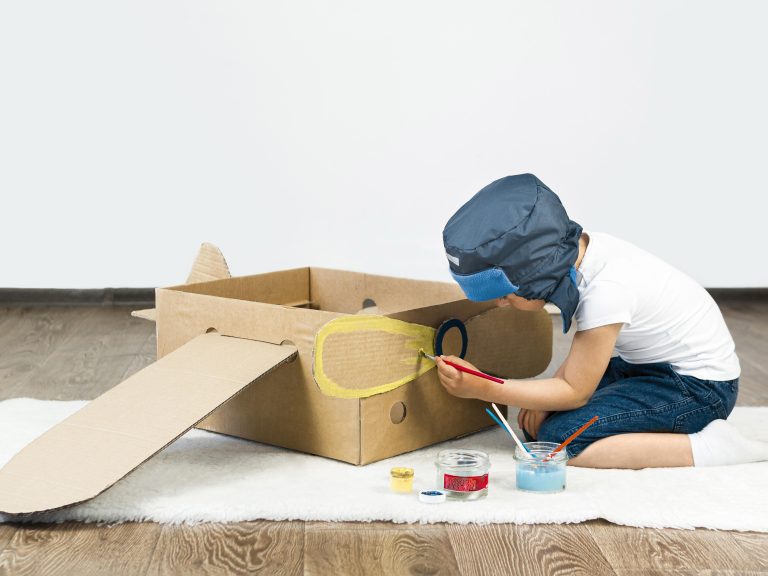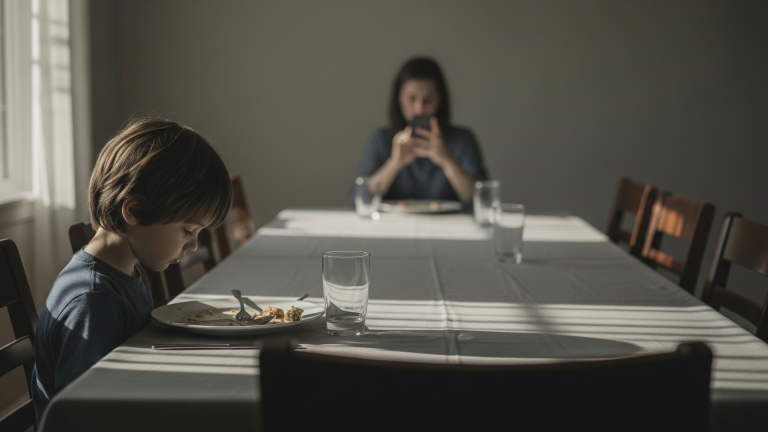Digital Detox for Moms: Reclaim Your Focus and Sanity
You are not failing at motherhood. You are failing at a culture that expects you to be everywhere at once.
Stop. Breathe. Read this.
This is not another pep talk. This is a practical plan built for a busy life. It explains what a digital detox actually is, why it matters for moms, what the research says, and how to do it in a way that fits school runs, part-time jobs, naps, and bedtime stories.
Below you will find evidence, a realistic step-by-step program, and sensible fixes for the common problems that make “unplugging” feel impossible.
What Is a Digital Detox?
A digital detox is a deliberate reduction or temporary pause of nonessential device and social media use. That can mean a full weekend off, an evening without screens, or a small but consistent daily rule such as “no phones at the table.” The goal is not moralizing technology. The goal is to reduce compulsive use so you can think, rest, and connect with the people in the room.
There are two useful types to keep in mind. A partial detox changes the rules around times, places, or apps. A full detox removes most nonessential devices for a set period. Both work. The difference is intensity and disruption. Choose what you can sustain.
Why Moms Need a Digital Detox
Being a mother involves constant task switching. You move between feeding, scheduling, grocery lists, homework help, and emotional labor. Phones and apps make that switching worse. They create short urgent tasks disguised as important ones. Notifications interrupt routines. Social media adds a layer of comparison and guilt.
Research links heavy, uncontrolled smartphone and social media use to higher stress, worse sleep, and lower well-being in adults. Recent intervention trials that intentionally reduced phone use produced measurable improvements in depressive symptoms, stress, sleep quality, and overall wellbeing. Those results suggest the relationship is not only correlation but can be causal when usage drops. (PMC)
That matters for moms because stress, sleep, and mental bandwidth shape parenting quality. When you are constantly interrupted, you are less likely to be present during the small moments that matter.
Digital Detox Backed by Evidence
- A randomized trial that reduced smartphone screen time reported small to medium improvements in depressive symptoms, stress, sleep, and well-being after three weeks of reduced use. (PMC)
- Experimental work that physically limited internet access showed declines in smartphone use and improvements in subjective well-being. That suggests simple blocking strategies can work. (Oxford Academic)
- Exposure to evening light from screens delays sleep onset and suppresses melatonin. Reducing evening screen use improves sleep latency and quality in intervention studies. (PNAS)
- Pediatric and family guidance emphasizes family media plans and parental modeling. Children mirror parents’ habits. The American Academy of Pediatrics recommends creating a family media plan rather than offering one universal rule.
These are the facts. They explain why a targeted, realistic detox is worth trying.
Benefits of a Digital Detox (Benefits you can reasonably expect)
Not grand promises. Real, practical outcomes other moms report and studies support.
How to Do a Digital Detox (A practical, evidence-based 3-week plan for busy moms)
This is not a retreat. It is a manageable experiment you can finish and evaluate.
Week 0 — Prep: Collect Data, Set a Simple Goal (2–3 days)
- Measure. Use your phone’s Screen Time or Digital Wellbeing report for three days. Note total time, top apps, and the hours you use most.
- Pick one clear outcome. Example: “I want to sleep 30 minutes earlier and feel less scattered in the evening.” Keep it specific.
- Choose one easy boundary to start: no screens during family dinner or screens off one hour before bed.
Do not attempt radical overnight change. Small wins build confidence.
Week 1 — Mini-Detox (Daily Rules)
- Implement a daily rule that meets your life. Examples:
> Phone in another room 60 minutes after kids’ bedtime.
> No phones at the table.
> Two 30-minute “phone-free” windows during the day. - Turn off nonessential notifications. Keep alerts only for calls or messages from key people.
- Use simple app limits. On iPhone use App Limits and Downtime. On Android use Focus mode or Digital Wellbeing tools. These nudges mirror methods shown to reduce habitual use and improve mood.
Week one is about friction. If checking is impulse, make it slightly harder.
Week 2 — Weekend Experiment (24–48 hours)
Pick a low-stress window such as a Saturday afternoon plus evening or a Sunday morning through dinner. Make it device-light. Keep your phone for essentials like pickup logistics, but block social apps and news. Use airplane mode for nonessential devices if needed.
A structured, short break often reveals what screens were actually doing in your life. Some trials show that even short intentional breaks improve mood and sleep.
Treat this like a science experiment. Observe. Journal for five minutes after the weekend. What changed?
Week 3 — Scale the Wins Into a Sustainable Habit
- Keep the daily rule from Week 1.
- Schedule a weekly “tech-light” block—an evening or a morning—where phones stay out of reach.
- Adopt a family media plan. Discuss boundaries with partners and kids so expectations are clear. The American Academy of Pediatrics offers templates for family media planning.
If you work or run a household that needs coordination, use shared calendars or a single “on duty” device rather than removing all access.
Practical Tactics That Actually Work
Handling The Real Obstacles
“I need my phone for work or emergencies”
Keep a single, visible exception list. Allow essential apps. Use “Do Not Disturb” so only prioritized contacts can interrupt you. Communicate your plan to the people who may need to reach you.
“I feel guilty or I will miss out”
That feeling is normal. The aim is selective presence, not avoidance of connection. A weekly review of what you gained—more sleep, less stress, better conversation—reduces guilt. You will not miss what you never used for yourself.
“My partner or family won’t cooperate”
Frame it as family benefits. Offer a trial weekend and share what you noticed. Use the AAP family media plan as a neutral template to set expectations.
“I slipped. I scrolled for an hour.”
Do not catastrophize. Reflect on the trigger, adjust the rules, and restart. Data shows relapses are normal when changing tech habits. The important part is the pattern, not single slip ups.
“Consider a simpler phone”
For some moms, the hardest part of a digital detox is that their smartphone is both a lifeline and a distraction. One option is using a basic or minimalist phone for certain hours, weekends, or trips. These “dumb phones” still allow calls and texts but cut out social media, email, and app distractions. Some models even support limited tools like maps or music without the constant pings.
Switching temporarily (or even permanently) can create a natural boundary that doesn’t rely on willpower. It’s a good fit for moms who need a true reset or want to model balanced habits for their kids.
One classic option is the Nokia 3210. It’s recently been re-released with the same durability and simplicity it was known for in the 90s. You can call, text, and rely on its long battery life, but there’s no temptation of endless apps or notifications. For many moms, keeping a phone like this for weekends or tech-light days is an easy way to stay reachable without slipping back into scrolling.
How to Measure Success
Keep it simple. Use both objective and subjective markers.
If the subjective gains align with the objective numbers, you have a defensible habit.
Long-term Habits That Last
Quick Checklist: Start Tonight
- Turn off nonessential notifications.
- Put your phone in another room for dinner.
- Set a 30-minute screen-off buffer before bed.
- Tell one person about the experiment so you are accountable.
If you do these four things tonight, you will sleep better and be calmer tomorrow. That is not an exaggeration. The evidence supports measurable change from small reductions.
FAQs, Real Questions Moms Ask
Do I need to stop using my phone completely for a detox to work?
No. A full shutoff is not necessary for benefits. Most evidence shows that reducing nonessential use, blocking apps, and creating tech-free windows delivers meaningful improvements. Aim for sustainable change, not radical abandonment.
How long should a detox be to notice results?
Small benefits appear within days. The randomized trial that reduced smartphone time reported improvements within three weeks. Even a single evening of disconnection often improves sleep and mood. Keep expectations realistic.
Will reducing screen time help my sleep even if I use blue light filters?
Blue light filters help a little. The stronger effects come from reducing overall evening screen exposure. Multiple studies show that evening screen use delays sleep and that cutting back improves sleep latency and quality.
What if my kids rely on screens for learning or downtime?
Build a family media plan. Designate learning windows and leisure windows. Model balanced behavior. The AAP recommends planning and parental modeling over strict one-size-fits-all limits.
Are app blockers and focus modes actually effective?
Yes. Trials that used app limits, blocking, or removing internet access showed declines in habitual behavior and improved subjective well-being. They act as cues and friction to break impulsive loops.
Will I feel bored?
Possibly at first. Boredom is a short window of adjustment. Replace the habit with a small activity you enjoy and can actually finish in 10–20 minutes. Boredom fades when replaced with meaningful alternatives.
How often should I do a digital detox?
Weekly mini-detoxes combined with quarterly multiday breaks work well for many parents. The key is consistency, not frequency. Regular low-level boundaries beat occasional extreme fasts.
Final Word
You do not need permission to reclaim mental space. You do need a plan that respects your life. Start with one small change tonight. Measure for two weeks. Adjust and repeat.
If you want, I can convert the three-week plan into a printable checklist, a family media plan template you can edit, or a 30-day calendar you can follow step by step. Which would be most useful?








